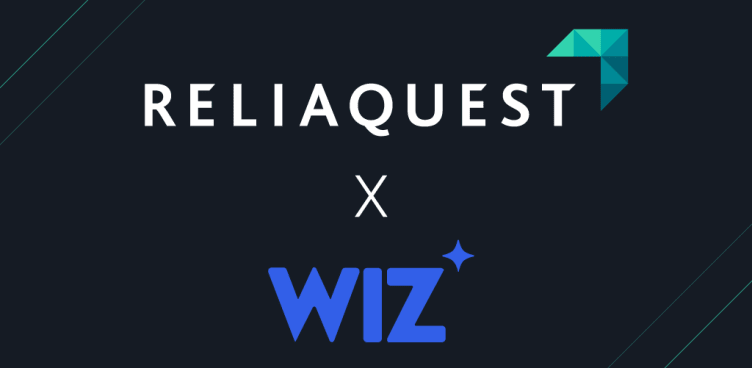Traditional perimeter defenses alone can no longer keep up with today’s threats. Attackers are making daily headlines by exploiting gaps in visibility and misconfigured controls—causing costly disruptions for organizations across every industry. And as hybrid infrastructures grow more complex across cloud and on-premises environments, these risks are becoming increasingly difficult to manage.
The numbers paint a bleak picture: 92% of ransomware attacks target blind spots in unmanaged or unknown assets. Can your team confidently detect and respond to critical risks before attackers break in?
To stay ahead of threats, CISOs need a strategy that unites visibility, context, and action. This three-step approach enables organizations to:
Know What You Own: Achieve comprehensive visibility to eliminate blind spots.
Know What Threatens You: Identify and address external risks and emerging threats.
Mobilize and Take Unified Action: Respond proactively with unified workflows and automation.
This blog explores how CISOs can implement these principles to reduce risk, improve resilience, and outpace attackers.
Know What You Own
You can’t protect what you can’t see. Visibility gaps in unmanaged devices, misconfigured, or non-compliant IT systems can lead to vulnerabilities that attackers are quick to exploit.
Hybrid and multicloud infrastructures only make the problem worse. These dispersed environments make it harder for security teams to keep track of assets, leaving critical gaps in oversight.
The risks of fragmented visibility:
Coverage Gaps: Disjointed tools and fragmented data leave critical blind spots, such as spoofed domains, leaked credentials, overprivileged service accounts, and misconfigured assets, which attackers exploit.
Missed Context: Without telemetry from all data sources, security teams struggle to connect the dots between assets, activities, and threats across environments.
Siloed Workflows: Fragmented data leads to inefficient handoffs across teams, delaying remediation and containment.
The consequences are significant: Nearly 70% of organizations report attacks targeting poorly understood devices or assets, and it takes security teams an average of 6.3 hours to contain threats without automation—far longer than the 48 minutes attackers need to break in.
The first step to reducing risk: Eliminate blind spots by unifying visibility across your environments.
Understand Your External Threats with Context
Consider this scenario: Your team detects a login attempt on a cloud-based application from an unrecognized IP address. Initially, it appears to be just another alert in the daily flood of notifications. But when enriched with threat intelligence, the activity is linked to a credential leaked on the dark web.
Without external visibility and enriched context, incidents like this can go unnoticed—giving attackers an opportunity to exploit the gap.
Here’s why external threat awareness matters:
Expanding Attack Surfaces: Hybrid infrastructures increase exposure to external risks, making it harder to pinpoint vulnerabilities and misconfigurations that attackers can leverage.
Advanced Tactics: Techniques like AI-driven phishing and supply chain compromise allow attackers to bypass traditional defenses.
Common Entry Points: External exposures, such as leaked credentials or misconfigured assets, serve as a commonly used entry point for attackers.
To stay ahead, security teams need to extend their visibility beyond internal environments, proactively addressing external exposures before they escalate into full-blown attacks.
Mobilize and Take Action Against Uncovered Risks
Unified visibility is essential—but awareness alone won’t stop attackers. To stay ahead of threats, teams need to act quickly and decisively. With AI accelerating the pace of attacks, organizations can keep up by leveraging proactive security validation, streamlined workflows, and automated responses—all powered by an AI-driven security operations platform.
Proactive Measures to Strengthen Defenses:
Security Validation: Continuously validate the effectiveness of detections and security technologies to ensure high-priority threats are captured—not just during scheduled assessments, but in real-time as environments evolve.
Unified Workflows: Integrate data across tools to streamline processes and team collaboration, enabling faster handoffs and resolution.
Automated Responses: Automate responses based on enriched context, reducing manual intervention and enabling faster containment.
By embedding proactive measures into their strategies, CISOs can ensure their teams are ready to respond quickly while minimizing disruptions.
How ReliaQuest GreyMatter Bridges Visibility, Context, and Action
ReliaQuest GreyMatter transforms security operations by seamlessly uniting visibility, telemetry, and actionability into a single platform. It eliminates blind spots by consolidating and deduplicating assets across environments, enriches telemetry with real-world threat intelligence to prioritize critical risks, and accelerates response times with AI-driven automation and workflows.
Here’s how ReliaQuest GreyMatter connects the dots:
GreyMatter Discover: Automatically identifies, consolidates, and deduplicates assets across environments to close visibility gaps and eliminate blind spots.
Digital Risk Protection (DRP) Extends visibility beyond internal environments to detect external exposures, such as leaked credentials, misconfigured assets, and spoofed domains.
Security Validation: Continuously tests and validates security controls and detections, using telemetry to simulate attacks based on real-world threat intelligence.
By unifying visibility, context, and actionability, GreyMatter empowers CISOs to proactively reduce risk, strengthen defenses, and outpace evolving threats.
Conclusion
Attackers exploit gaps faster than teams can respond—visibility is your first line of defense. With ReliaQuest GreyMatter, CISOs can confidently close visibility gaps, enrich security context, and act decisively to address emerging risks. By transforming reactive processes into proactive strategies, GreyMatter helps organizations stay ahead of attackers while minimizing disruptions.







